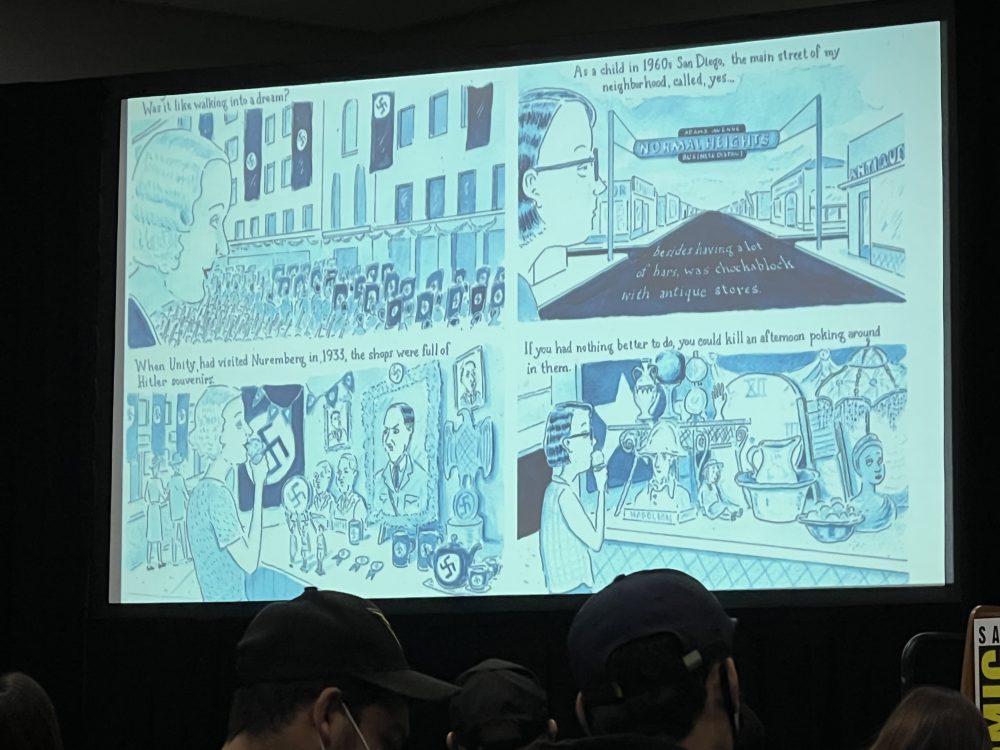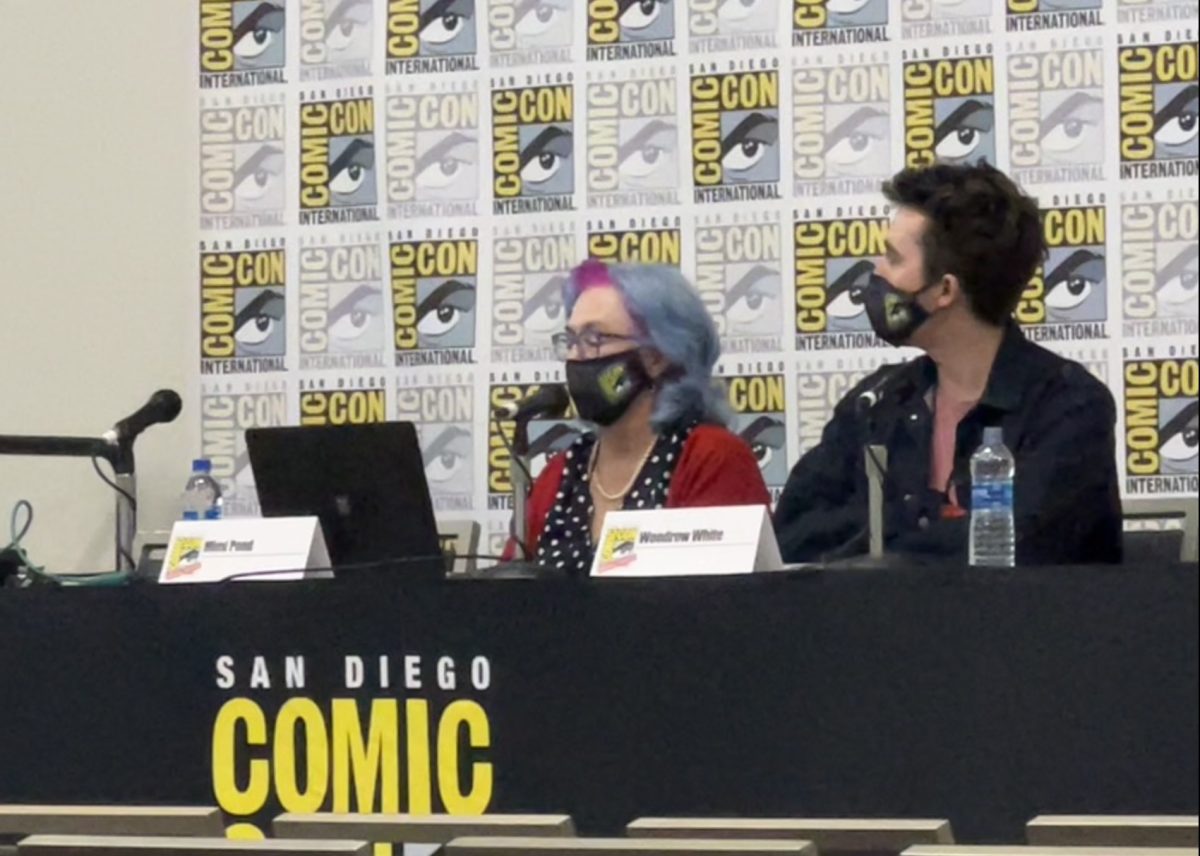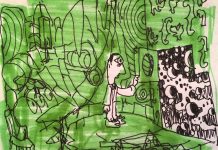In Friday’s “Spotlight on Mimi Pond” panel, Mimi Pond (Over Easy, The Customer Is Always Wrong) joined her son Woodrow White (Nickelodeon Animation) to talk about the blood, sweat and tears artists endure to hone their craft. She and White also talked artistic influences and what it meant to grow up in an artistic and book-loving family. Pond then engaged with attendees in a frank conversation about her experience as a writer on The Simpsons and her subsequent career as a humorist, writer, and independent artist.
Pond kicked off the “Spotlight on Mimi Pond” panel by stressing the importance of practicing daily to develop the craft: “Drawing is an exercise and a discipline,” explained Pond. “So, if you’re serious about drawing or art or comics or whatever, I’ve always felt it was important to draw every day in the same way that professional ballet dancers take ballet class every day. It’s like a muscle memory thing. The more you do it, the better you get. I’m 65 years old, and I’m still improving. Eventually you’ll get it. You’re never too old to get better at what you want to do. And that way, you don’t stagnate, and you find a new way of making art.”
Pond presented a slide show of early drawings and the drawings of artists who influenced her and her son in their creative careers, including Dr. Seuss, who inspired Pond’s love of combining words and images; and Eloise creators Kay Thompson and Hilary Knight for their details and the dynamism of the images.
“Everybody who wants to learn to draw should always take figure drawing to learn dynamics,” said Pond. “You learn the gestural drawing to give your drawings energy and make them more dynamic, more exciting.”
Other influences include Mad Magazine’s Harvey Kurtzman and Al Jaffee, George Booth (New Yorker cartoonist), Henri de Toulouse-Lautrec, Audrey Beardsley, and the magnificence of Charles Shultz’s drawings (“the economy of line is just brilliant”). She described the experience of visiting a Master Artist series at the Hammer Museum in Los Angeles as akin to a religious awakening.
“Seeing original drawings of anyone’s work that I admire for me is like a religious experience because there is something about seeing real marks on a real piece of paper in front of your eyes. It’s almost like you’re meeting the artist yourself,” said Pond. “It’s like making a connection.”
White cited Charles Addams (“line work and subtle humor”) and Gary Larson’s Far Side (“the absurdist humor with subtle line work”) as formative influences. According to Pond, artists like Larson, Roz Chast and Sergio Aragonés employ a simple style that may appear to look as if they can’t draw; however, the drawing is controlled and works for the artist. According to White, these artists have a joke in their head, use the skills and styles they possess to convey the joke on the page. Single panel cartoons and its economical, one-shot style are difficult skills to master, and one which Pond admires.
“If you’re going to make comics, you got to be prepared to draw anything, everything,” said Pond. She cited an example of struggling to draw cars and car interiors. “Even if you hate to draw it, you have to find a way to make it your own.”
Pond presented a preview of her new book, DO ADMIT: Making Sense of the Mitford Sisters and talked about the process of drawing the Mitford sisters and the struggle of capturing the nuances of each sister on the page. Circling back to the willingness to draw anything and everything to develop skills, Pond explained how she approached drawing 60s era television sets.

Story development for the new book followed the same routes that she used with other projects. Pond related how she recognized a story in the individuals that worked in the Berkeley diner that employed her during an era where hippies, punks, sex, drugs and rock-and-roll intersected. She took notes, wrote up a conventional novel that failed to sell. One day, as she stared at baby Woodrow, she experienced an epiphany and turned the failed novel into Over Easy, the successful graphic novel.
During the audience question-and-answer session of “Spotlight on Mimi Pond,” an attendee asked why she did not continue working for The Simpsons beyond the series’ first episode. Pond did not mince words. She expressed her frustrations of working for a boy’s club that did not welcome contributions from female colleagues. That negative experience led to much more personally fulfilling projects, like her columns with the Los Angeles Times, her cartooning projects, and her books. Pond found the sweet spot with what worked and has continued to hone her craft through practice and her willingness to draw anything and everything.
Miss any of The Beat’s earlier SDCC ’21 Special Edition Coverage? Find it all here!











